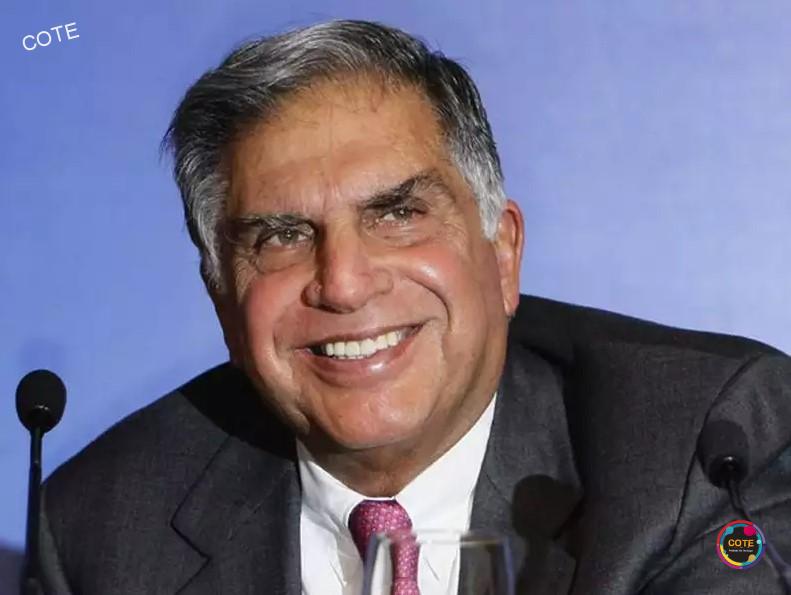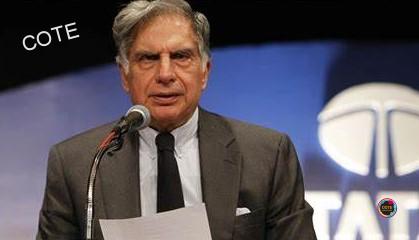The Untold Story of Ratan Tata | The Men Who Built India | Content On The Edge
Hello, Content On the Edge family! You may discover some Tata Company brand in just about any area of your life. You may drive an automobile; Tata Motors produces a variety of them. You may fly since Tatas also own Vistara Airlines and Air India. The Taj Hotels are owned by the Tatas, therefore you might stay there. You undoubtedly wear clothing; Tatas even has a clothing line called Westside. You may rely on Tata’s Tanishq for all of your jewellery requirements. Tata Tea, for the tea you brew. even Tata Salt, the salt that is added to your food. You wouldn’t believe this, friends, but the Tata Group also includes enterprises like Tata Steel, Tata Power, and Tata Consultancy Services. Therefore, it is not surprising that Tata is presently one of India’s most well-known and prosperous enterprises. But did you realise that this business didn’t suddenly grow to be enormous? They needed 200 years.
200 years, that’s right! Friends, read this Article to learn more about the fascinating history of India’s longest business family. The Tatas’s family secrets. “The Tata Group has established itself as a market leader in the majority of the industries it founded in India.” “Because of Tatas, who pioneered many firsts, including the first 8-hour day and the first paid leave,” the speaker said. “I would rather say that I have grown it three times as fast as it has, than live with the knowledge that I have of keeping the ideals that we have, that we’ve attempted to uphold over these years.” Friends, the year 1822 marks the start of our tale. 200 years ago today. A kid was born to a family of Parsi priests in a Gujarati village.
Tata Nusserwanji. Even as a young child, he had a restless soul. He desired to accomplish big things. According to legend, he was the sole person in his community who felt compelled to leave and do great things. When he was 20 years old, he left his village and travelled to Mumbai because he thought it was his destiny. and made an effort to start a new business. Many young people still do this today in order to establish a new future; the difference was that he already had a wife and a child. Child marriages were fairly prevalent back then. When he was around 17 or 18, he had become a father. He relocated his family to Mumbai. The cotton trade there drew him in.

And before long, he was managing a cotton export company.
He made sure that the money from the business went toward his son’s schooling. He didn’t want any compromises. He gave Jamsetji the best education available at the time for his son. It meant receiving an education in English back then. The cotton trading enterprise of Nusserwanji really took off. Jamsetji’s father chose to send him to Hong Kong for business expansion once he reached adulthood and completed his education. Businessmen sending their kids abroad for business expansions may seem extremely typical today, but friends, keep in mind that this occurred in 1859. It would take another 55 years for air transport to be developed. The voyage by ship back then was laborious and protracted. Jamsetji’s father dispatched him on a mission to open an office in Hong Kong in 1859, when he was 20 years old. Oddly enough, Jamsetji wasn’t the only one there. He has a child and was married. Making the choice was difficult. to relocate the family to a different country. try to establish a business there. Jamsetji, however, had high ambitions.
He achieved great success as a result.
In the 65 years of his life, Jamsetji worked on three continents. several cotton mills in India were started. He also started India’s first 5-star hotel and laid the groundwork for the country’s first steel mill. It was India’s first hotel with electricity. being entirely electrified Which hotel do you suppose it was? Stop reading the article for few seconds, then reflect. The Taj Hotel in Mumbai is the right response. It is currently one of India’s most prestigious hotels. Jamsetji Tata left a legacy that is still unequalled today when he went away in 1904. And I’m not just stating this from a commercial standpoint. Nowadays, creating a successful business is extremely common. There are a lot of these for-profit companies. But Jamstji also left behind a magnificent legacy of morals and ethics. To further grasp this, let’s look at some examples. Jamsetji established his first cotton mill facility in Nagpur in 1874. His first time moving beyond cotton trading and into the industry of cotton production. You face new challenges when you launch a new firm. He observed how sluggish the workers were in this cotton factory in Nagpur. They would invent justifications for their absence. They refused to show up for work. There has never been a day when all of the employees and labourers at this mill were present.

What would a boss do in such a circumstance?
Threaten to terminate employment if employees are absent from work. Berate the employees, But he was acting in a way that was not customary. He anticipated that the labourers’ indolence would have a cause. In order to inspire people, he needed to find a long-lasting, humanitarian solution. For them, he established a General Provident Fund. to guarantee that these workers continue to receive a pension after retirement. Additionally, he established an insurance programme that required the business to cover any worker’s accident-related medical expenses. In addition to this, he established Family Days and Sports Days to encourage a feeling of community among the workers by allowing them to bring their families and forge better bonds with one another. Though they could be relatively popular in today’s society, keep in mind the time period in which this was created. The labour conditions were appalling in the rest of the world in the 1800s. Amazingly, he was paying for these costs out of his own pocket. The American Civil War then started in 1861. This was advantageous for Jamsetji’s business in a roundabout way.
Prior to the Civil War, England used to import the majority of its raw cotton from America, but the supply was stopped. Jamsetji took advantage of the chance and increased the price of the cotton he supplied by double. Since there was no choice but to import cotton from India, England. He established his office in London and worked there at this time. For the following four years, he made enormous earnings. But the American Civil War ended after 4 years, and American goods started coming again. The business of Tata was negatively impacted by this. and it began suffering losses. Investors began tormenting him for a return on their capital. Jamsetji, though, remained unwavering. He assured everyone who invested that they would receive their returns. and merely requested some time. Investors approved of him continuing to work because of his honesty. However, the investors claimed that Jamsetji would only receive a meagre £20 per month in pay. despite the fact that he was the business’s owner. Working as a fixed-salaried employee in the business he controls was extremely offensive to him. But he didn’t let that stop him.

| Social Media Links:- | #CONTENTONTHEEDGE – C.O.T.E |
| Youtube- ✅ | Subscribe to the YouTube channel of Content on the Edge |
| Facebook- ✅ | Like and Follow on Facebook for Latest content videos of C.O.T.E |
| Instagram- ✅ | Follow on Instagram for Latest content |
| Twitter- ✅ | Join Content on the Edge on Twitter for latest updates |
| Telegram Channel- ✅ | Join Telegram Channel to get latest files and updates |
| Telegram Group- ✅ | Join C.O.T.E Telegram Group to get latest updates |
| Whatsapp- ✅ | Click to text C.O.T.E on Whatsapp |
| Whatsapp Channel- ✅ | Click to Join C.O.T.E Whatsapp Channel for Latest Updates |
It demonstrates Jamsetji’s commitment to his company.
Friends, did you know that his father shared the same traits? Nusserwanji sold his mansion to pay the investors when his cotton business was struggling and they demanded their money back. Both times, the choices turned out to be wise ones. Both Nusserwanji and Jamsetji were able to safeguard their reputations and companies. This shows us that our chances of success increase significantly if we have the necessary enthusiasm, commitment, and skills. For his time, many of Jamsetji’s dreams were groundbreaking. constructing a hydroelectric power station.
Establishing in India top-tier educational institutions. establishing a steel mill, constructing a five-star hotel that is open to guests of all races. Racism was very prevalent at the time. He was able to construct the hotel throughout his lifetime. However, construction had already begun on the other three of his dream projects before he passed away. Later, his son Dorabji Tata made sure that the remaining portions of his dreams were realised. Tata’s steel mill was constructed by 1910. Additionally, steel manufacture had begun. At this point, World War I started. At that time, the British Empire used a lot of steel. As a result, Tata Steel emerged as the nation’s major steel supplier.
The British tanks were made with steel from Tata. Likewise for the railroad tracks and the guns. Tata Steel actually “saved us,” according to a famous remark made by a British MP during World War I. As a result of the superior quality of its steel, even bombs dropped on these tanks were unable to pierce them. The brand Tata Steel grew even more well-known as a result. Tata Steel had established a very solid reputation in Great Britain following the end of World War One. The Tata group had grown to be so large by 1914 that it included 14 different businesses. But it was only the start. Till 1938, Dorabji Tata was in charge of the Tatas’ operations.
After that, Jahangir Ratan Tata, a distant relative, seized control of the business. His name is JRD Tata, to us. Another enthusiastic young man with lofty goals. In France, JRD Tata was raised. There, he held a pilot’s licence. He is well known for like to fly. He then founded Tata Air Lines, India’s first airline. Renamed later to Air India. In 1947, India became independent. Back then, socialism predominated. All of our independence fighters, including Gandhi, Bhagat Singh, and Swami Vivekanand, held socialist beliefs. Therefore, it is pretty evident that Jawaharlal Nehru’s economic policies were socialist as well as the nation gained independence. He made the decision to nationalise the country’s major corporations and institutions. They would be governed by the state. As I stated in the film on socialism, this is viewed as a wise choice given the circumstances, but for the Tatas, this was bad news. Additionally, Tata Air Lines was nationalised. JRD Tata was devastated by the information.

However, the Tata family has always held the view that business serves more purposes than just making money. JRD Tata eagerly accepted the Nehru government’s offer to lead Air India once the company was nationalised. For this reason, Air India was regarded as one of the most prominent airlines in the world from the 1970s through the 1980s. In addition to this, JRD extended the company in several other industries. The very first Tata Motors product was created in 1945. Tracks will be used to run locomotive engines.
The Tata Consultancy Services (TCS), which offers services for electronic data processing, was established in 1968. TCS is currently the second-largest employer in the nation. using the Indian Railways as a model. In addition, JRD Tata continued to lead the Tata family for 52 years while still running their salt company, producing electronics, and Cancer Research and Treatment Center. There were 95 enterprises in the Tata group at the time of his leadership. Monopolies and Restrictive Trade Practices Act was enacted in 1969. This law had the most impact on the Tata group. The purpose of the government was to prevent any corporation from becoming so large that it establishes a monopoly in every industry.
Despite the adoption of such regulations, JRD Tata oversaw the expansion of the Tata Group. How? He decreased the percentage of ownership held by Tata Sons in the businesses as a result of the Tata Group’s expanding number of subsidiaries. The new businesses were no longer viewed as monopolies as a result. But as other people took over the management of Tata’s enterprises over the course of several years, this strategy proved to be unsuccessful for the company. For instance, its electronics division, Nelco, once produced radios. Nelco’s market share had decreased to 2% by 1971. where it once stood at 20%. To get Nelco back on track, Jamsetji Tata’s grandson was contacted, to be more precise. Mr. Ratan Tata himself was here. Since 1962, he has been employed for the family firm; however, Nelco was given to him in 1971.
Ratan Tata made the decision to stop producing radios and sought to resurrect Nelco by investing in cutting-edge technologies. for instance, satellite communications. The company recovered in three years. Nelco’s market share had returned to 20% by 1975. Unfortunately, the Emergency was proclaimed at this time, negatively affecting Nelco’s operations once more. This eventually necessitated its shutdown. But you know what, Jamsetji Tata’s cotton mill in Nagpur has a similar tale. Ratan Tata was charged with bringing it back to life, but his efforts fell just short of success. But by this time, Ratan Tata’s abilities had caught the attention of the senior management.

For this reason, he was named JRD Tata’s successor in 1991,
and he assumed leadership of the Tata group. Dr. Manmohan Singh, India’s finance minister, first proclaimed India’s liberalisation in 1991. internationalisation of the Indian market India abruptly abandoned the socialist paradigm and began transitioning to a capitalist one. It was allegedly the only means of safeguarding the Indian economy. Ratan Tata, the head of the Tata Group, made the decision to go in the exact opposite direction of what JRD Tata had done after watching it all unfold. He began increasing the ownership of Tata Sons in all Tata Group entities. This was done to prevent any foreign corporations from acquiring any of the Tata group companies. This choice turned out to be really wise. The Tata Group not only managed to survive at this time, but it also started purchasing foreign businesses.
The Tata Group paid $12 billion to acquire the English Tetley Tea Company. The Tata Group purchased Corus, the largest steel company in Europe. Another intriguing situation included the UK-based automotive manufacturer Jaguar Land Rover, which was in talks to be sold off. The company’s employees desired a takeover by the Tata Group. Three to four firms had made proposals to Jaguar Land Rover. The employees decided on Tata Group from among those potential buyers. Although this was a luxury brand, Tata didn’t ignore its lower-class clients. It is believed that Ratan Tata witnessed a family riding a scooter in November 2003. A scooter was crammed with four persons. And it started to rain. They were merely getting by. Ratan Tata unveiled the Nano Car five years later. He narrated a tale as he started it. The Tata Group regards social upliftment as the central tenet of their corporate culture. They sought to enable car ownership for the lower middle class. Only ?100,000. Cheapest automobile in the world. Another issue is how poorly this car’s marketing plan was executed.
With a price tag of Rupees 100,000, they advertised it as the most cheap car, but they didn’t take into account how consumers would perceive this. Who would want to own this vehicle? Wouldn’t someone be thought of as cheap if they bought this car? to get the most affordable automobile. This was a mistake in marketing. However, Tata never paid much attention to branding tactics. This is evident from the fact that the Tata founded numerous organizations and companies that were not given their names. the Indian Institute of Science, for instance. the Nagpur cotton mill in india The Empress Mill was given to it. In honour of Queen Victoria’s coronation, it was given that name. The Taj Hotel brand. There is no mention of Tatas. The city of Jamshedpur, which bears Jamsetji Tata’s name, was not given that name by the Tata family; rather, it was given by the British Viceroy of India at the time. The Tata Group’s thrilling tale was this.
Many thanks, cherished friends!
Watch Video Below by Dr Vivek Bindra ji on Mr. Ratan Tata and follow him.



